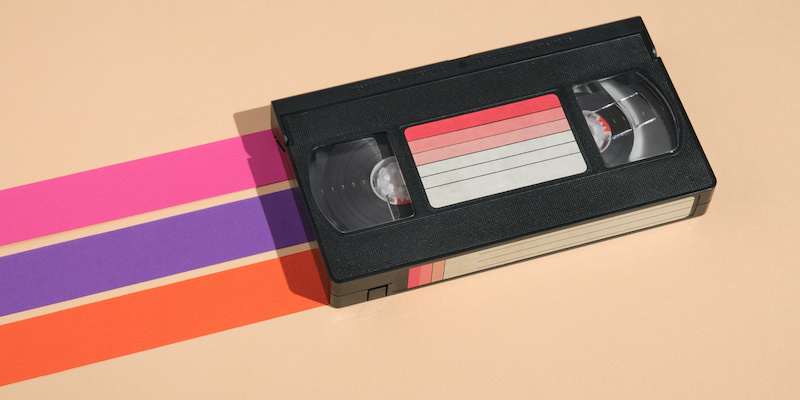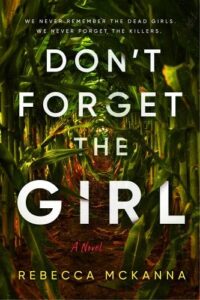There’s a scene in the 2019 movie Captain Marvel where Brie Larson’s character crashes to Earth in 1995, falling through the roof of a Blockbuster video store. She walks through the dimly lit aisles of VHS tapes, before getting startled by, and blowing up, a cardboard cutout of Arnold Schwarzenegger advertising the 1994 movie True Lies. Captain Marvel is full of nostalgic relics—troll dolls, a payphone in front of a Radio Shack, and songs from No Doubt, Garbage, and TLC.
As someone born in 1985, it conjured visceral memories of Friday evenings, walking through Blockbuster, clutching the plastic VHS cases and trying unsuccessfully to get my parents to buy some of the overpriced movie candy sold near the checkout counter. At one point while watching the movie, I turned to my husband and asked, “Can you be homesick for another time?”
I’m clearly not alone in my nostalgia for the late 90s and early aughts. There are TikTok and Instagram accounts like @shinypretties and @90s_00snostalgia sharing images of dElia’s catalogs, tamagotchis, bottles of Fruitopia, inflatable furniture, and disposable cameras. Fashion has honed in on the yearning, too, with low-rise jeans and Doc Martens becoming ubiquitous again. Meanwhile, reboots of TV shows from the time, like Bel Air, Girl Meets World, and That 90s Show, have become common, along with shows set in that period, like Yellowjackets and PEN15.
It’s no wonder I set part of my novel, Don’t Forget the Girl, in the early aughts. While writing, I reveled in the details—like chunky Nokia cell phones, answering machines, visible thongs, and music from the Pussycat Dolls. But nothing is ever simple, especially our hunger for the past. As I wrote the book’s 2003 timeline, I started to remember the era’s darker parts—the sexism, homophobia, and diet culture. Crime fiction seeks to unsettle the reader, and there’s something disquieting about viewing the past—even the recent past—through the lens of our current era.
Recently, podcasts like You’re Wrong About and various documentaries have relitigated the treatment of famous women from the late 90s and early aughts. The 2021 New York Times documentary Framing Britney Spears lays bare the misogyny the teen pop star faced from the media before her ultimate breakdown and conservatorship under her father. Two more vehicles reexamining the treatment of women during that era would follow in 2021. Malfunction: The Dressing Down of Janet Jackson, was another New York Times documentary, focused on the effects on Jackson after the 2004 Super Bowl Halftime performance—one of the few vehicles that center the treatment of a woman of color during the era. The FX series Impeachment: American Crime Story allowed Monica Lewinsky, who served as a one of the show’s producers, to share her side of the late 90s sex scandal with Bill Clinton. This year, Netflix’s Pamela, A Love Story, allowed actress Pamela Anderson to talk about the misogyny she faced from the media after her sex tape with rocker Tommy Lee was stolen and sold.
I found this relitigation of the past happening in my own novel, too. Don’t Forget the Girl follows three friends—one of whom, Abby, was presumed murdered by a now notorious serial killer while they were in college. In the present timeline, the surviving women face the true crime media circus that threatens to erase their friend’s memory. In the 2003 timeline, the final months of Abby’s life unfold while the girls are freshmen in college.
Early on, the girls sit in their dorm room watching an episode of America’s Next Top Model. As part of a challenge, the contestants must writhe around covered in oil half-naked on a bar, symptomatic of the period’s objectification and body-shaming—what culture writer Constance Grady dubbed the era’s “bubblegum misogyny.” Throughout the novel, Abby grapples with her romantic relationship with her friend and roommate, Chelsea, struggling with her own internalized homophobia and society at-large’s anti-queer messages.
Beyond relishing the early 00s nostalgia, writing the book allowed me to reckon with how young women, including me, were treated during that time and the impact it had on us. While I wrote it, I listened to a lot of pop artists from the early aughts—Britney Spears, the Black Eyed Peas, Christian Aguilera. Eventually, though, I switched to moody covers of these songs performed by present-day artists. I needed to hear those familiar, bubblegum melodies with a darker edge.
***


















